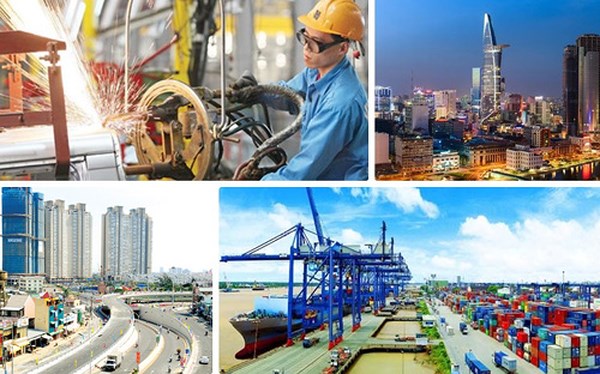-
Surging trade with Southeast Asian neighbors is the latest sign that China’s trade with the region is likely to maintain high-speed growth pace in 2023
-
Strong trade with Southeast Asian countries that played a major role in stabilizing China’s economy last year should remain robust this year, experts say
-
Last year, the first year of the Regional Comprehensive Economic Partnership, China’s total trade with ASEAN reached 52 trillion yuan (about US$969.5 billion) in value
Major Southwest China ports’ robust trade with neighboring countries in Southeast Asia, including Myanmar, Laos and Vietnam, flags strong growth this year, Global Times reported, citing comments from local officials and traders.
The busy scenes at the border ports are the latest sign that China’s trade with Southeast Asian countries is likely to maintain high-speed growth in 2023, experts noted.
China’s foreign trade with the Association of Southeast Asian Nations (ASEAN) grew 15% year-on-year in 2022, the first year of the Regional Comprehensive Economic Partnership (RCEP).
The value of China’s trade with ASEAN totalled 6.52 trillion yuan (around US$969.5 billion) in 2022. Exports reached 3.79 trillion yuan, up 21.7%, and imports made up 2.73 trillion yuan, up 6.8%, General Administration of Customs statistics showed.
China’s trade with Southeast Asian countries should continue to grow robustly in 2023 following the region’s major role in stabilizing China’s foreign trade last year, Huo Jianguo, vice president of the China Institute for World Trade Organization Studies, told the newspaper on January 29.
“Chinese products may have relatively greater export potential to countries like Laos and Myanmar. As these countries enjoyed relatively good economic development in recent years, they need more daily consumer goods from China,” Huo said.
On January 27, a truck loaded with raw materials for traditional Chinese medicine left the town of Muse in Myanmar and entered Ruili, Yunnan, without switching drivers, the Global Times reported. It learned from the Ruili entry and exit border administration on January 29 that was common among cross-border truckers, showing that cargo operations at the checkpoint have returned to pre-epidemic standards.
Ruili port is using a simplified customs clearance process, which has greatly lifted the speed, border crossing officials and traders said.
Communication between joint inspection units and enterprises can help ensure “zero waiting” and “zero delays” in the inspection process.
Requirements for sectioned transportation, driver changes and static disinfection were removed at border crossings in Yunnan, greatly reducing the time and costs for foreign trade companies, Global Times cited a manager from Yunnan JieRui Freight Forwarding Co as saying.
“Border crossings operated non-stop during the Spring Festival. It is a good start and we expect a significant lift in trade volume in late February,” the manager said.
Ruili port is one of the busiest China-Myanmar border crossings and is crucial to trade. In 2019, total cargo volume through Ruili port exceeded 17.45 million tons worth nearly 100 billion yuan, accounting for about 80% of the province’s trade volume with Myanmar.
Cross-border trade with other Southeast Asian countries also increased during the holidays.
According to Customs authorities in Kunming, during the Spring Festival (January 21-27), Kunming Customs approved 68,400 tons of international freight via the China-Laos Railway, up 237% from the same period in 2022.
Major Chinese exports include textiles, steel, hardware and small household appliances, while imports to China include iron ore, cassava starch and crude lead ingots.
The Hekou border crossing, the largest port on the China-Vietnam border in Yunnan, recorded its first peak of passenger and cargo trade this year, with streams of Chinese and foreign tourists buying Spring Festival goods, visiting relatives and friends, and negotiating business.
The border station approved more than 9,000 passenger visits, 750 freight vehicles, 10 freight trains and more than 11,000 tons of cargo from January 21-26.









